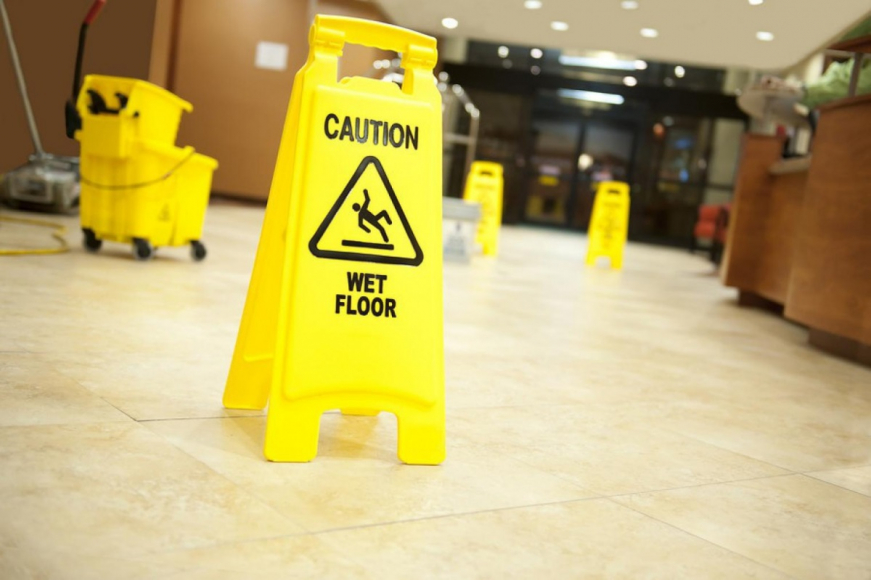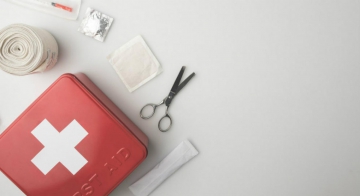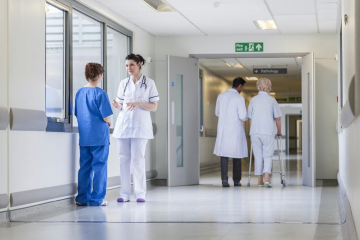Hospitals are safe places to work - right? Well, maybe not.
US Department of Labor Bureau of Labor Statistics for 2014 (the most recent year published) show that total recordable case rate for hospitals (injury and illness cases per 100 full-time workers) is 6.2. The hospital injury rate is higher than in mining (3.8), hazardous waste treatment and disposal (4.6), and manufacturing (4.0). Now that should set off an alarm for health and safety professionals.
Expect the Unexpected: Slips, Trips and Falls
When it comes to employee and patient safety in hospitals, you might expect the most common injuries to be needle sticks or back injuries. Hospital risk managers and safety directors know all too well that the most frequent causes of injury for healthcare workers are overexertion and lifting injuries, largely from moving patients.
Surprisingly, though, the second highest cause of injury in hospitals is from slips, trips and falls (STF). In the United States, STF by hospital employees account for 25% of injuries; in the United Kingdom, SFTs account for almost half of the workplace injuries in healthcare. These STFs can, at minimum, result in a decrease in the healthcare worker’s ability to do his or her job effectively, but all too often can also result in lost time or even disability for the worker. This all then leads to increased costs for the healthcare provider.
Know the Hazards
By taking a closer look into STF incidents in hospitals, you can see that hazard identification and control is paramount to preventing STF incidents. The top ten hazards that result in STF injures in hospitals are:
- Contamination on the floor
- Poor drainage
- Indoor walking surface irregularities
- Outdoor walking surface irregularities
- Weather conditions (snow and ice)
- Inadequate lighting
- Poorly constructed and poorly illuminated stairs and handrails
- Failure to use stepstools and ladders for elevated work
- Tripping hazards such as clutter, loose cords, hoses, wires, and medical tubing
- Improper use of floor mats and runners
Beyond OSHA Compliance
Every healthcare organization is required to comply with OSHA regulations, and there are regulations in place related to these top ten hazards. Luckily, there are some easy improvements that have a great impact on reducing STF:
- Recognize an STF hazard and remove the hazard before an injury occurs.
- Keep floors clean and dry.
- Use proper cleaning procedures for floors and make sure appropriate cleaning supplies are available
- Wear slip-resistant shoes.
- Prevent entry into areas that are wet.
- Use the proper tool for the job—for example, use a step stool or ladder instead of a chair to reach overhead storage.
- Improve lighting.
- Choose the right floor mat for the application.
- Reduce or eliminate trip hazards over ¼” high in all areas of pedestrian travel. For changes in level ¼” to ½” high, bevel with a slope no greater than 1:2. For heights greater than ½” high, consider a ramp.
- Ensure handrails are present on stairs and in hospital corridors, both for patients and healthcare workers.
However, it’s not always as simple as it sounds. In this era of “that’s not my job” or “someone else should do it,” we all need to step up and take actions to prevent an injury to ourselves or someone else. Colleague safety and well-being is not just for managers, it is for everyone.
Comprehensive Workplace Safety Involves (and Benefits) Everyone
Reducing STF incidents is just one part of comprehensive healthcare safety management process. Engaging all healthcare workers (and even patients) in identifying and reducing hazards in the facility will enhance employee and patient safety, improve morale and reduce cost.
Training and education are fundamental to any safety and wellness program, and require the entire organization to work safely, help each other, and to identify possible hazards. Ownership, responsibility and accountability to “do the right thing” is everyone’s job.
Additional Resources
OSHA has several publications on hospital safety, including an e-tool on STF in hospitals.
The Health and Safety Executive in the United Kingdom has also has a website devoted to slips and falls.
Want more news and insights like this?
Sign up for our monthly e-newsletter, The New Leaf. Our goal is to keep you updated, educated and even a bit entertained as it relates to all things EHS and sustainability.
Get e-Newsletter



